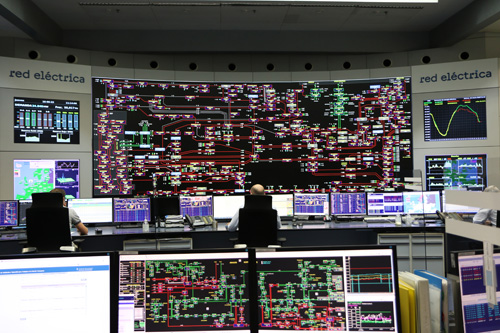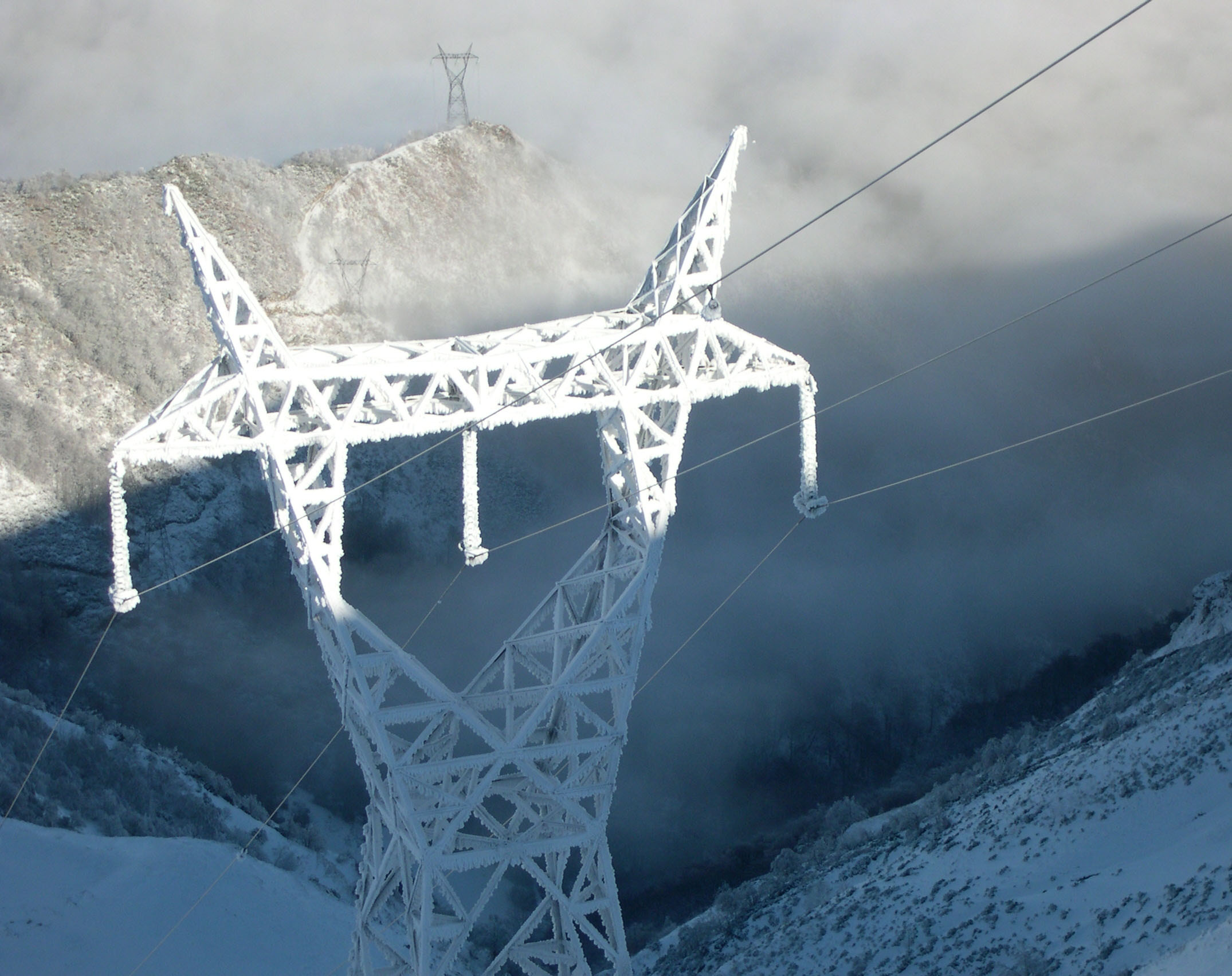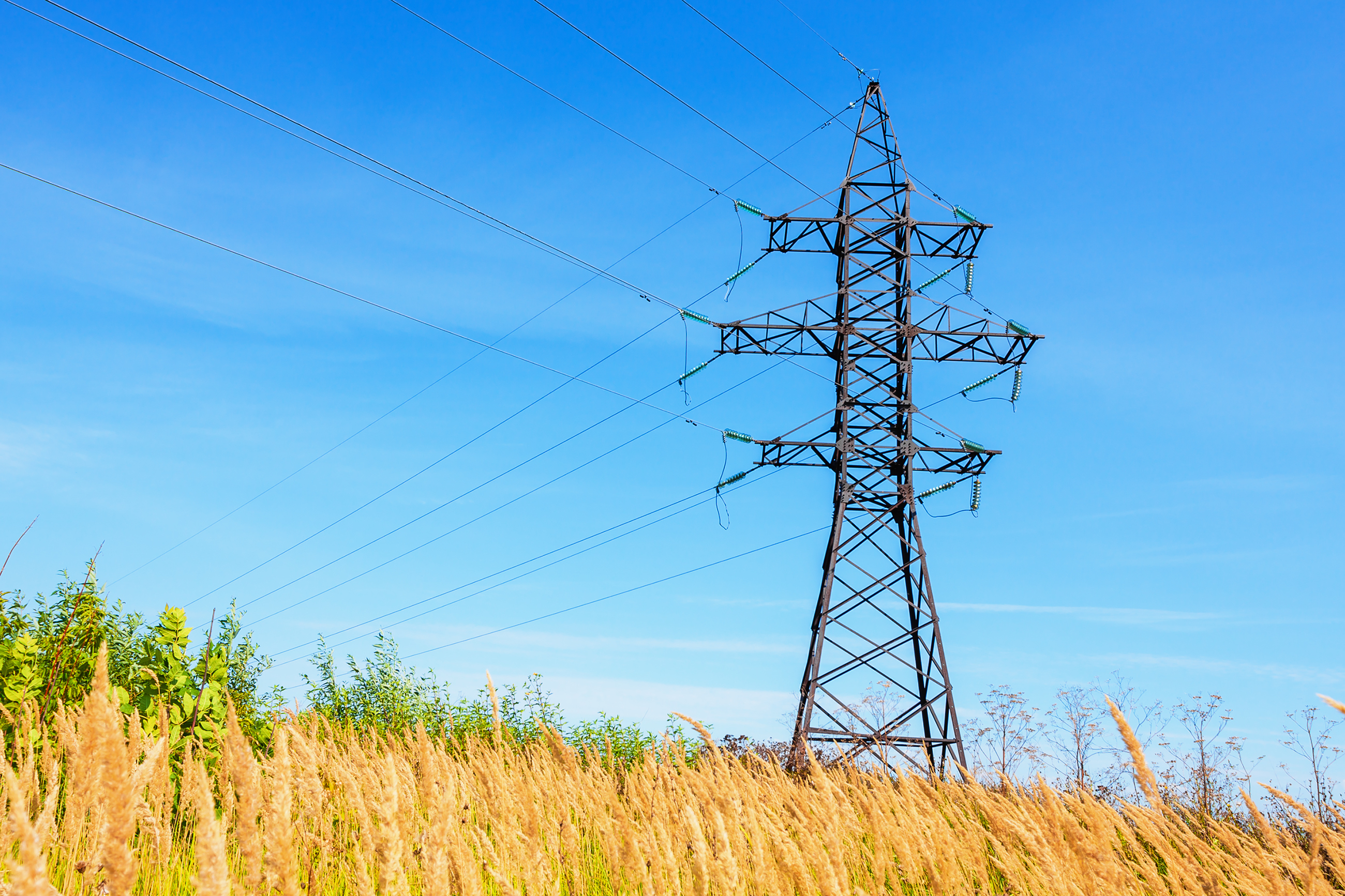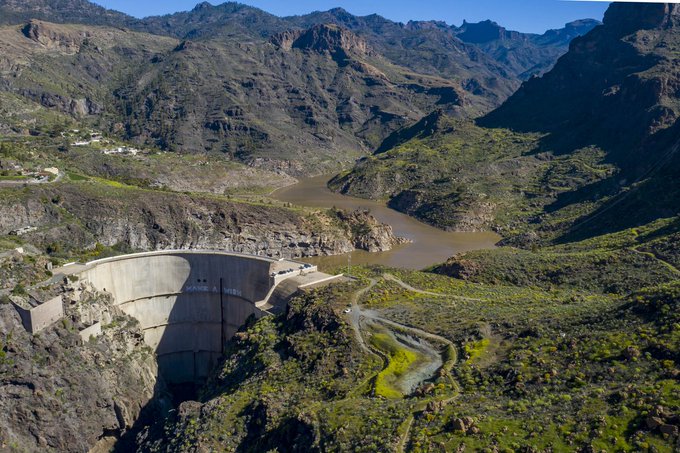For 40 years, we've been driving our country's economic and social progress. Four decades shaping Spain.
Spain's demand for electricity falls by 2.1% in April
- This month, renewable sources produced 64.3% of the total electricity in Spain.
National electricity demand in April decreased by 2.1% compared to the same month last year, after adjusting for the effects of working days and temperature. This represents an estimated gross demand of 18,655 GWh, marking a 3.3% decrease compared to April 2024. It is worth noting that Holy Week in 2025 took place in April (from Sunday 13th to Sunday 20th), while in 2024 it occurred in March (from the 24th to the 31st).
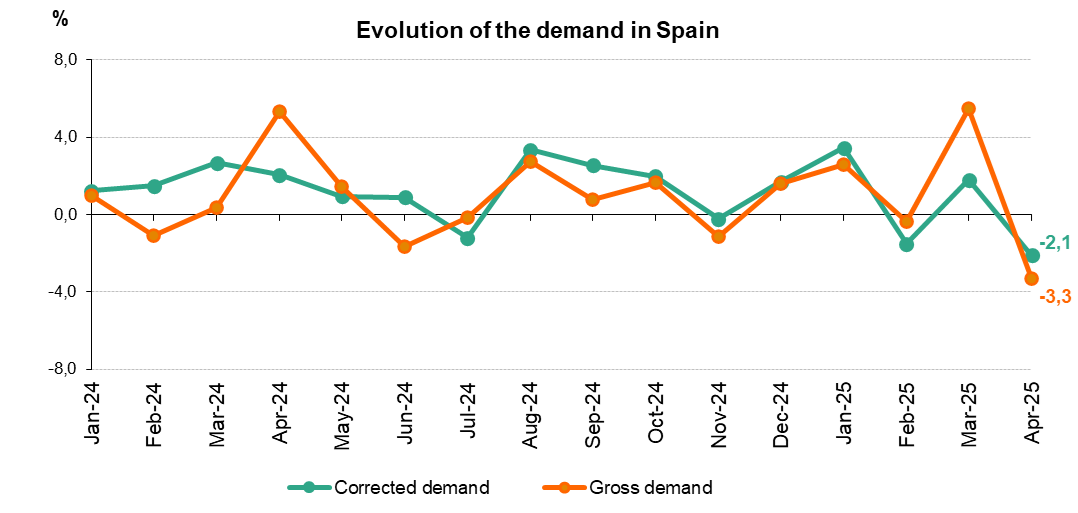
According to provisional data, daily electricity demand on 28 April in Spain was 40.9% lower than on the equivalent day in 2024, which was Monday, 29 April. Meanwhile, electricity demand contracted by 12.7% on 29 April 2025 compared to the same day in 2024.
From January to April 2025, Spain recorded demand of 83,686 GWh, 1.2% higher than in the same period in 2024. Again, if the effects of the calendar and temperature are taken into account, demand increases by 0.5%.
This April, renewables generated 12,955 GWh, accounting for a 64.3% share of the national energy mix. Meanwhile, technologies that do not emit CO2 equivalent produced 78.9% of the total. Wind power was the leading technology in April, accounting for 21.6% of the total, followed by solar photovoltaic (20.1%) and hydroelectric (19.4%).
On 16 April, a new hourly record for renewable participation was set between 12:00 and 13:00, when renewables reached a share of 80.7%. In addition, solar photovoltaic set a new hourly record on 21 April, with a 61% share of generation between 13:00 and 14:00.
Storage technologies enabled the integration of a total of 990 GWh of electricity into the national electricity system in April, optimising the use of energy generated from renewables. In addition, 1,081 GWh of electricity were scheduled for export to neighbouring countries during this month.

The electricity system in the Balearic and Canary Islands
Electricity demand in the Balearic Islands was 0.7% higher than in April 2024, after adjusting for the effects of working days and temperatures. In absolute terms, monthly demand was estimated at 428,191 MWh, 1.3% lower than the previous year. During the first four months of the year, electricity demand in the Balearic Islands reached 1,761,346 MWh, an increase of 2.1% compared to the same period in 2024.
In terms of electricity generation, the combined cycle remained the leading energy source, supplying 66.1% of the energy produced in the Balearic Islands. Meanwhile, renewable generation in the region increased by 10.7%, reaching an 18.1% share of the total.In terms of electricity generation, the combined cycle remained the leading energy source, supplying 66.1% of the energy produced in the Balearic Islands. Meanwhile, renewable generation in the region increased by 10.7%, reaching an 18.1% share of the total.
Additionally, the underwater link between the Peninsula and Majorca helped meet 19.9% of the Balearic Islands' electricity demand.
In the Canary Islands, electricity demand fell by 1.7% compared to the same month in 2024, after adjusting for the effects of working days and temperatures. This represents an estimated gross demand of 697,393 MWh, 2.2% lower than in 2024. So far in 2025, electricity demand in the Canary Islands has reached 2,868,256 MWh, which is 0.8% lower than in the same period last year.
With respect to generation, combined cycle remained the leading source in the Canary Islands in April, accounting for 41.7% of total production. Renewables accounted for 21.1% of electricity generation, producing 146,861 MWh, a 10.8% increase compared to the same month last year. Wind energy contributed 105,459 MWh, 11.4% more than in 2024, reaching a 15.1% share of the archipelago’s energy mix.
Downloads



